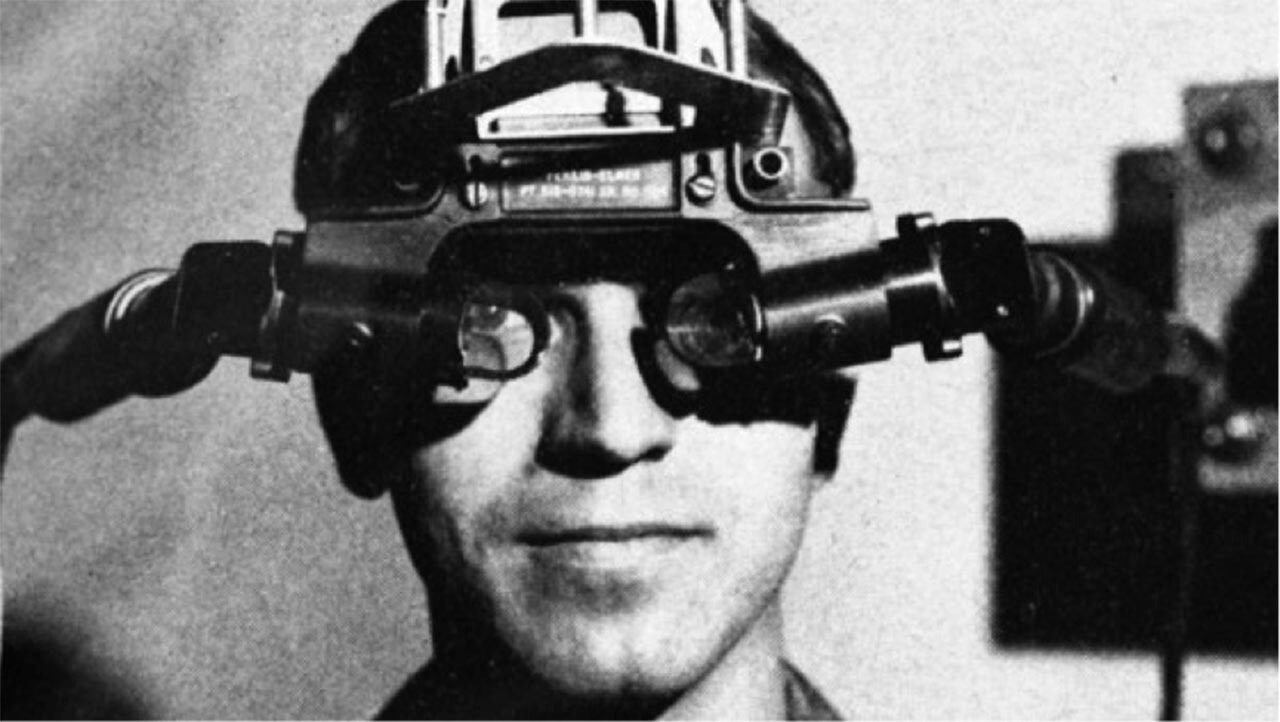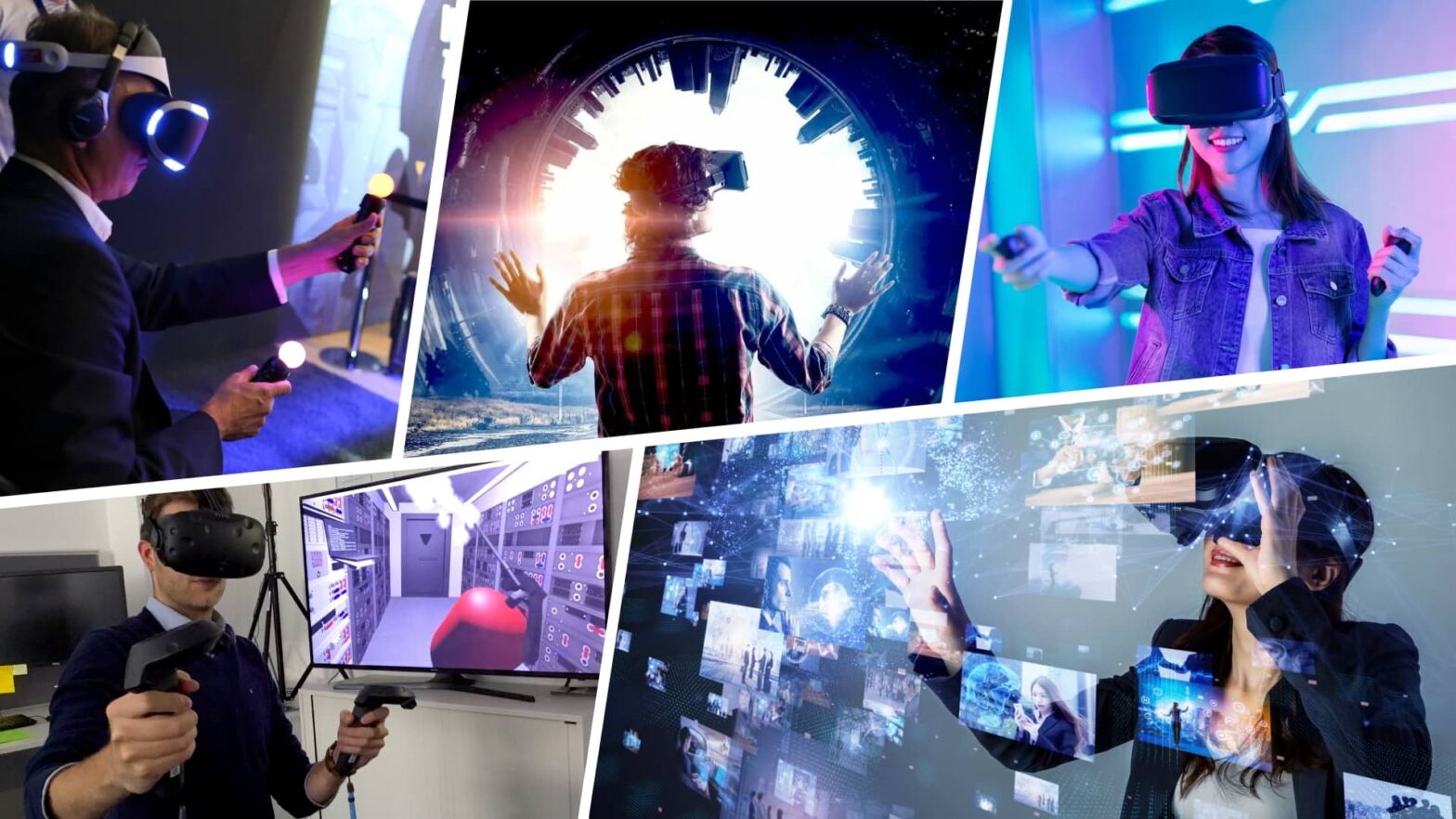It was not long ago that the idea of virtual reality seemed to only be realized in science fiction. But now, VR technology is becoming increasingly popular on Christmas wish lists, office spaces, and viral videos. With its increasing popularity many fear it, others embrace it, and some simply wonder, “What is virtual reality?” In this article, we’ll take a look at what defines virtual reality, how it was developed over time, and what applications it will have in the future of our society.
What is virtual reality?
First, let’s define virtual reality
Virtual reality falls under an umbrella term “extended reality.” To differentiate this from other technologies, let’s take a look at VR specifically.
VIRTUAL REALITY DEFINITION
What is virtual reality?
Virtual reality is a three-dimensional, simulated environment that is generated by computer technology. Virtual reality, or VR, focuses on an experiential interface rather than observational. The immersive technology allows users to interact with objects, physically look around within the VR environment, and perform specific actions.
Most VR operates with the use of a headset that users look into. More complex VR, however, utilizes gear like handheld controllers, special gloves, headphones, or even omni-directional treadmills.
Most popular VR applications:
- Gaming
- Education
- Entertainment
- Telecommunication
What is the difference
Virtual reality vs augmented reality
Before we dive into how VR came about and what the future applications it may be, let’s differentiate it from another type of digital simulation: augmented reality. Virtual reality and augmented reality are not so distant cousins, and thus can be easily mixed up. So, what is the difference between augmented reality and virtual reality?
Virtual reality creates a computer generated environment that users inhabit and experience. Augmented reality (also called mixed reality) creates computer generated objects within a real environment.
This is typically achieved with the camera on a smartphone or computer. Augmented reality is still rooted in a real environment while virtual reality synthesizes an environment all together. For a better visual understanding of the differences between AR and VR, check out the video below.
Augmented reality vs. virtual reality: AR and VR made clear
It is important to note that augmented reality and virtual reality are two sides of the same coin. Both fall under the umbrella of “extended reality.” VR might seem like a futuristic idea that has only been recently realized, but the reality is computer scientists have been striving to achieve VR tech for quite some time.
VR Technology Explained
History of virtual reality
Every year, virtual reality technology becomes more and more popular in the commercial sector. In 2014, Facebook purchased Oculus, a trailblazing VR tech company, for an eye-popping $3 billion. Zuckerberg at the time said “Oculus has the chance to create the most social platform ever, and change the way we work, play and communicate.”
But when exactly was this revolutionary technology birthed? The question is a bit difficult to answer since the term “virtual reality” has been used long before technology was capable of realizing it. So for the sake of an answer, let’s look past the theoretical and focus in on the tech.
The slow burning history of VR technology dates back as far as the 1960s. This is when computer scientist Ivan Sutherland created “The Ultimate Display,” what many refer to as the first attempt at VR head mounted display.

What is Virtual Reality • Ivan Sutherland
Sutherland’s tech was used by military pilots to view video feed from cameras mounted on a helicopter’s underside. From here, the military and NASA began heavily investing in VR tech development. The value in functioning VR ranged from aviation simulations to in-field tools.
This video by Game Spot dives deep into this section of VR history. In the video you’ll learn how the military and NASA really propelled VR tech forward and how the technology made the jump to entertainment and gaming in the 1990s.
Vr technology explained • History of Virtual Reality
Once virtual reality tech became a promising part of the future of gaming, industry leaders really began to see the potential of VR. However, many failed at developing substantial commercial VR technology. And as Y2K came and went, VR seemed to have a dismal future.
That is until 2012 when the early prototypes of the Oculus Rift stole the show at the E3 gaming trade show. To better understand how game changing the Oculus Rift was, check out their kickstarter video below that raised $2 million.
What is a virtual reality system • Oculus Rift: Step into the Game
Two years later, Facebook's acquisition of the Oculus created an arms race for better VR tech. Companies like HTC and Sony are looking to beat Oculus in what they see as a VR dense future.
What do these industry trailblazers see as far as the future of virtual reality? The possibilities are quite endless. But here are some of the groundbreaking applications of virtual reality of the future.
the possibilities of VIRTUAL REALITY
The future of virtual reality
When it comes to virtual reality functions and applications, the possibilities have become seemingly endless with more promising technology. Let’s take a look at a few of the most popular and up and coming applications that are just around the corner if not here already.
Gaming
The most obvious and popular VR application is of course in video games. In the 90s, VR gaming pushed tech and demand forward. Today, gamers continue to do so by designing VR specific games that entice consumers into buying their own VR sets. Sets now come with a head mounted display as well as hand controllers for a full experience.
Check out some of the best VR games coming out in the video below.
What is Virtual Reality • Best VR Games 2021
Telecommunication
In 2020, when the Coronavirus pandemic closed offices and forced 9-5ers into the work-from-home lifestyle, the demand for better telecommunication tech skyrocketed.
As companies continue to extend WFH terms into an unforeseeable future, VR technology is entering the telecommunication space. Companies are looking to bring employees together despite physical distance.
Virtual reality has become a tool for just that. This video by the Wall Street journal analyzes how VR can be the future of the workspace environment.
What does virtual reality mean • The Future of Your Office Is in a VR Headset
Of course, corporate employees are not the only ones who benefit from the capabilities of virtual reality. VR is being explored as an educational tool.
Education
The three-dimensional world has undoubtedly opened doors for teachers who have struggled to find interactive ways to teach their students. Afterall, young students are often better captivated through interactive learning.
Specifically in the world of mathematics, VR technology allows students to visualize and interact with mathematical functions that would be more difficult to understand in a 2D medium like a white board or computer screen.
In the video below, you’ll be able to see how teachers use a VR demo to engage their students and what their thoughts are on VR educational applications.
What is Virtual Reality • VR in Education
Mental health
One of the more groundbreaking functions of virtual reality that is being explored is in mental health. Specifically, VR has been used as a tool to treat veterans with PTSD. Computer scientists have been able to generate VR environments that stimulate battlefield scenarios.
This has helped veterans who suffer from PTSD to partake in immersion therapy in a controlled environment.
Define virtual reality • Using Virtual Reality to Treat PTSD
Entertainment
In the entertainment industry, the future of movie theatres and their relevance is very much up in the air. Movie lovers seem to be abandoning theatres for the comfort of their own home. And commercially available VR technology will only propagate this further.
VR trailblazer Oculus is developing ways to watch movies in a theatre environment with your friends in a VR environment. This can disrupt how consumers experience and purchase movies in general.
What does virtual reality mean • Watching Movies on VR System
While the video above focuses on movies, the same application can be realized in the music industry for concerts, conventions, and any live event.
As you can see, the applications of virtual reality reach far past the gaming industry. Virtual reality is opening new doors in industries from medicine to entertainment to education. How prevalent will virtual reality be in the future? Where will it take us? The answer is just around the corner.
UP NEXT
What is CGI?
Virtual reality aims to simulate computer generated environments that immerse users into an experience. To really understand how these environments are created you need to understand CGI. In our next article, we take a look at the history of CGI, how it’s created, and how it is evolving.
Up Next: CGI Explained →
Showcase your vision with elegant shot lists and storyboards.
Create robust and customizable shot lists. Upload images to make storyboards and slideshows.
